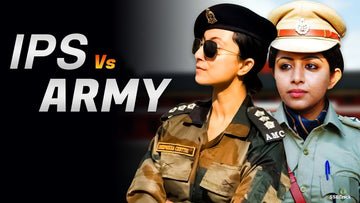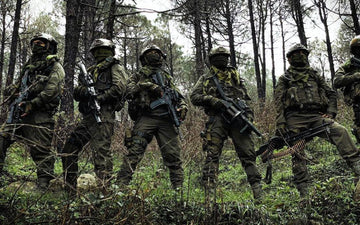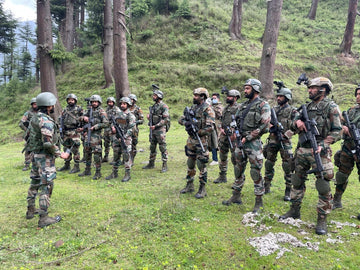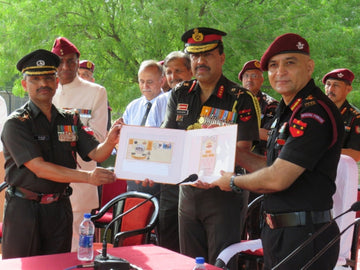Historical Context
To understand the roles and powers of IPS and army officers today, it’s crucial to look back at their historical evolution. The IPS was established in 1948, rooted in the British colonial model of policing but eventually morphed to meet the specific needs of a sovereign India. The primary objective of the IPS was to maintain internal security and law enforcement, creating a structured bureaucracy that could manage crime and civil order post-independence. Conversely, the Indian Army has a long legacy that predates independence, with its organizational roots stretching back to the British Indian Army. Its transformation into the modern Indian Army post-1947 represented a shift towards national defense, focusing not only on external aggression but also on humanitarian and disaster relief missions. This historical backdrop sets the stage for understanding the unique powers and responsibilities of both the IPS and Army officers.Roles and Responsibilities
IPS Officers
IPS officers are tasked primarily with maintaining law and order across various jurisdictions, encompassing urban centers, rural areas, and even sensitive regions affected by insurgency or extremism. Under the jurisdiction of the Ministry of Home Affairs, their roles are comprehensive and often overwhelming. The primary responsibilities of IPS officers include:- Law Enforcement and Crime Prevention: An IPS officer is responsible for investigating crimes, enforcing laws, and managing police departments. For instance, a Superintendent of Police (SP) oversees the law enforcement mechanisms in a district, coordinating with other officials to ensure comprehensive community safety.
- Public Safety Management: They engage in proactive policing measures by deploying strategies to prevent crime before it occurs. This often involves community outreach programs, awareness campaigns, and collaboration with other government agencies to address social issues.
- Crisis Management: IPS officers are key players in managing communal riots, protests, and emergencies. They have jurisdiction over armed forces deployed in internal security situations, which further amplifies their responsibilities.
- Administrative Role: Beyond direct law enforcement, IPS officers manage substantial bureaucratic duties, liaising with various governmental and non-governmental organizations to address public concerns.
Army Officers
Army officers, tasked with national defense, embody a different spectrum of responsibilities that operate primarily at the national level. Their duties encompass:- National Security: The foremost responsibility of army officers is to protect India’s territorial integrity and national sovereignty from external threats. This includes strategic planning, troop deployment, and executing military operations.
- Training and Development: Army officers are responsible for the training and professional development of soldiers. Their safeguarding of operational readiness is crucial, especially during times of conflict or heightened tension.
- Humanitarian Assistance and Disaster Relief: In times of natural disasters or humanitarian crises, army officers lead relief operations. Their training enables them to mobilize resources efficiently, exemplifying their versatility beyond mere combat roles.
- International Peacekeeping: Army officers often participate in UN-led peacekeeping missions, which extend India's military diplomacy and foster international goodwill.
Rank Equivalence
An essential aspect of understanding the power dynamics between IPS and army officers lies in their rank equivalencies. According to the 7th Central Pay Commission, the correlating levels provide insight into their structures:- Level 10: A Lieutenant in the Army holds an equivalent status to an Assistant Superintendent of Police (ASP) in the IPS and Assistant Collector (IAS).
- Level 11: A Major in the Army equates to a Superintendent of Police (SP) in the IPS and a Collector (IAS).
- Level 14: A Major General in the Army holds a similar status to an Inspector General (IG) in the IPS and Secretary at the State Government level.
Order of Precedence
The Order of Precedence established by the Government of India further delineates the hierarchical status among various officials, determining the protocol at events and governmental functions. While a General in the Indian Army commands a prestigious position, it is critical to note that the Cabinet Secretary, representing civil administration, ranks above all military officers. This hierarchy indicates that while army officers possess operational command and respect associated with national defense, civil administrators, including IPS officers, may wield substantial influence over governance and domestic affairs.Societal Status and Respect
Both IPS and army officers command significant societal respect, yet perceptions vary based on their roles. The public often views army officers as protectors of national integrity, venerating them for their sacrifices. This image is bolstered through various state-funded initiatives honoring military personnel, creating a distinct reverence for their contributions. Conversely, IPS officers are recognized for their local impact on law and order. High-profile cases, such as arrests of notorious criminals or successful handling of communal riots, often garner media attention and public admiration. Actions by IPS officers have remained pivotal in shaping perceptions around law enforcement, impacting community relations significantly.Power and Influence
Operational Power
When analyzing operational power, army officers clearly dominate. They embody the authority to command troops in combat scenarios, leading initiatives during crises, and executing strategic military doctrines. Their decision-making can pivot national strategy and response during times of conflict. Conversely, while IPS officers lack the same level of tactical authority in military operations, they wield considerable influence over civil security matters within the country. An IPS officer can mobilize police forces, oversee security during critical events, and coordinate with the military when required for internal threats.Administrative Power
The field of administrative power highlights the bureaucratic clout of IPS officers, who often occupy influential roles in governance. Their position allows them to make decisions impacting everyday public life, manage resources, and enforce laws that guide societal conduct. Their administrative authority relies heavily on legal frameworks, often allowing them to exercise judgment on complex civil issues. In contrast, army officers’ administrative capacities are typically more rigid, focused primarily on military personnel management, logistical support, and mission execution. While they may have authority over operations and personnel within their command, their influence on civilian administrative structures is generally limited.Case Studies and Real-World Applications
To truly appreciate the implications of the power dynamics between IPS and army officers, it is beneficial to look at real-world scenarios where their roles intersected.The Role of IPS in Mumbai Terror Attacks
A poignant example is the 2008 Mumbai terror attacks where IPS officers played a crucial role in addressing the crisis. The swift action by these officers helped in coordinating responses across jurisdictional lines, apprehending suspects, and ensuring safety for the city's populace under extreme duress. The high-stakes command and control during this incident underscored the importance of their responsibilities toward public safety and law enforcement.Army's Contribution to Disaster Relief
The deployment of the Indian Army during natural calamities such as the 2015 Nepal earthquake showcased the operational readiness and effectiveness of army officers in humanitarian assistance missions. Their ability to mobilize resources, coordinate with governmental bodies, and execute relief efforts directly impacted lives and reflected their unique responsibilities in safeguarding national interests beyond mere combat.Challenges and Solutions
Both IPS and army officers face unique challenges in their respective domains.Key Challenges for IPS Officers
- Politicization of Police Work: IPS officers often experience pressures from political entities which can hinder their ability to act independently in law enforcement.
- Resource Constraints: Increasing crime rates and limited resources can complicate effective policing.
Proposed Solutions: Strengthening accountability measures, providing adequate resources and training, and fostering community engagement can enhance the efficacy of IPS operations.
Challenges Faced by Army Officers
- Mental Health Issues: The high-stress nature of military service can lead to significant mental health challenges among soldiers.
- Budget Constraints: Fiscal limitations can severely affect training, procurement, and operational readiness.
Proposed Solutions: Prioritization of mental health resources, increased defense budgets for modernization, and focus on family welfare programs can aid army officers in fulfilling their duties effectively.





